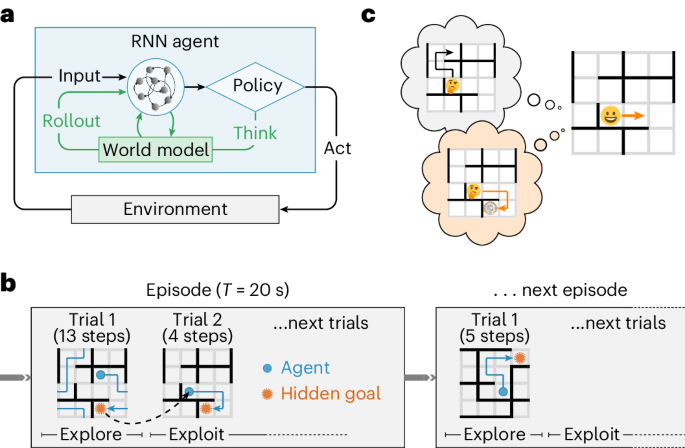2024-06-07 ニューヨーク大学 (NYU)
国際研究チームは、意思決定時に脳の前頭前皮質と海馬がどのように相互作用して未来の結果を想像し、判断を導くかを解明しました。この研究は「Nature Neuroscience」に発表され、前頭前皮質がシミュレーターとして機能し、海馬に保存された認知マップを用いて可能な行動を精神的に試すことを示しました。
◆研究チームは、計画中の脳活動を予測する計算モデルを開発し、人間とラットのデータを用いて検証しました。実験では、人間がオンライン迷路を解く際の思考時間と、ラットが物理的な迷路を通る際の神経応答を分析しました。
◆この結果、前頭前皮質と海馬の複雑な相互作用が確認され、計算モデルの予測と一致しました。この研究は、意思決定を助ける脳回路の基本的な理解を深め、関連する障害の治療法の向上にもつながる可能性があります。
<関連情報>
- https://www.nyu.edu/about/news-publications/news/2024/june/what-s-going-on-in-our-brains-when-we-plan-.html
- https://www.nature.com/articles/s41593-024-01675-7
計画のリカレントネットワークモデルが海馬の再生と人間の行動を説明する A recurrent network model of planning explains hippocampal replay and human behavior
Kristopher T. Jensen,Guillaume Hennequin & Marcelo G. Mattar
Nature Neuroscience Published:07 June 2024
DOI:https://doi.org/10.1038/s41593-024-01675-7

Abstract
When faced with a novel situation, people often spend substantial periods of time contemplating possible futures. For such planning to be rational, the benefits to behavior must compensate for the time spent thinking. Here, we capture these features of behavior by developing a neural network model where planning itself is controlled by the prefrontal cortex. This model consists of a meta-reinforcement learning agent augmented with the ability to plan by sampling imagined action sequences from its own policy, which we call ‘rollouts’. In a spatial navigation task, the agent learns to plan when it is beneficial, which provides a normative explanation for empirical variability in human thinking times. Additionally, the patterns of policy rollouts used by the artificial agent closely resemble patterns of rodent hippocampal replays. Our work provides a theory of how the brain could implement planning through prefrontal–hippocampal interactions, where hippocampal replays are triggered by—and adaptively affect—prefrontal dynamics.


